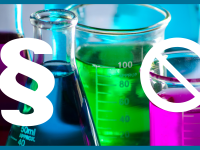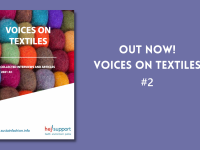The Use of Per- and Polyfluoroalkyl Substances (PFAS) in Textiles

PFAS are a group of chemicals widely and commonly used in the textile industry. Up to half of the total use of PFAS can be accounted for in this sector alone.1,2 PFAS are often used as impregnating agents due to their desirable textile-enhancing properties, which include breathability; oil, water, alcohol and dirt repellency; high thermal stability; and durability throughout the washing and dry cleaning processes.1,2 These properties are particularly useful in the production of outdoor apparel to help provide protection against variable environmental conditions.4
While there are a variety of alternative impregnating agents on the market, these alternatives are more limited to and provide only water repellency and have yet to be proven effective for the other desirable properties provided by PFAS.2 However, water repellency is one of the most essential properties of outdoor apparel, and therefore despite their more limited functionality, these alternatives may be enough to fulfill most of the requirements of industry players.4
There is a growing rise for concern regarding PFAS and their extreme persistence and overall negative impacts in and to the environment, which in turn puts human health at risk and highlights the need for this concern to be further addressed.
PFAS are released into the environment during several stages along the entire textile lifecycle, from production all the way to wastewater treatment plants. PFAS are highly soluble and mobile and therefore when emitted into the environment, they are able to permeate the soil and drift easily and far beyond their place of origin, which includes contamination of water sources such as groundwater basins and drinking water.1 PFAS-contaminated soil and water leads to threatening of ecosystems and the contamination of the food chain, which directly impacts human health. Another way PFAS contaminate the environment includes washing PFAS-based textiles in laundry washing machines, which results in the release of PFAS via machine discharge directly into wastewater. At the end of the pipeline, wastewater treatment plants unfortunately remain unequipped and are not technically advanced enough to successfully treat the matter at hand.1
In addition, certain PFAS may also have the potential to contribute to adverse health outcomes in humans through bioaccumulation as they are commonly found in many commercial household products and even food packaging materials. These adverse health effects also extend to workers in production facilities or industries such as electronics manufacturing, in which PFAS are used regularly in practice.3
In order to reduce the use of PFAS, many companies are looking for alternative impregnating agents. Examples of such alternatives include those based on paraffin, silicon, dendrimer, and polymer coatings.2 While these alternatives have their disadvantages, they represent an opportunity to inspire industry players to move beyond the conventional use of PFAS in textiles and to continue taking steps to design and create innovative solutions and safer alternatives for the preservation and protection of the environment and population.
References
- Witing, R., Nicol, L., Keyte, I., KreiBig, J., Crookes, M., Gebbink, W., Potrykus, A., & Schopel, M. (2020, October 22). The use of PFAS and fluorine-free alternatives in textiles, upholstery, carpets, leather and apparel. Wood. Retrieved from: https://echa.europa.eu/documents/10162/13641/pfas_in_textiles_final_report_en.pdf/0a3b1c60-3427-5327-4a19-4d98ee06f041
- Lassen, C., Astrup Jensen, A., & Warming, M.(2015). Alternatives to perfluoroalkyl and polyfluoroalkyl substances (PFAS) in textiles. The Danish Environmental Protection Agency.
- United States Environmental Protection Agency. (2021). Basic Information on PFAS. Retrieved from: https://www.epa.gov/pfas/basic-information-pfas
- Hill, P.J., Taylor, M., Goswami, P., & Blackburn, R.S. (2017). Substitution of PFAS chemistry in outdoor apparel and the impact on repellency performance. Chemosphere, 181, 500-507.






